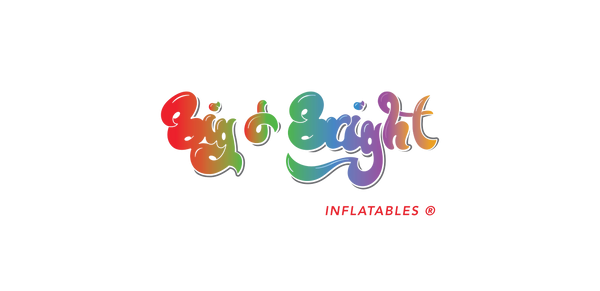Choosing and Maintaining the Right Generator for Your Inflatable Rental Business
Share
Choosing and Maintaining the Right Generator for Your Inflatable Rental Business
Hello everyone, Matthew Billington here from Big and Bright Inflatables! Today, I’m diving into everything you need to know about picking the perfect generator for your inflatable rental business and keeping it in top shape for those critical moments. Let’s break it down with some street smarts and technical know-how to ensure your bounce houses stay inflated and your events run smoothly.
How Big of a Generator Do You Need?
When choosing a generator, the first question is size—specifically, how much power do you need? You’ll see numbers like 7,500 starting watts, 6,000 running watts, or 11,500 starting watts. But what do they mean? Let’s simplify.
Street Smarts Approach
Look at the generator’s breakers, just like you would at a house. Most generators have multiple breakers—say, two 20-amp breakers and one 25-amp breaker. Each breaker supports a certain load:
- A 20-amp breaker can handle most blowers, like a 1.5-horsepower blower.
- A 15-amp breaker might trip if you overload it with two 1-horsepower blowers.
Think of each breaker as a separate power source, similar to outlets in a home. Spread your blowers across these breakers to avoid overloading.
Technical Breakdown: Understanding Watts
Watts are calculated as volts × amps. In the U.S., most generators run at 120 volts. A typical 1.5-horsepower blower draws 10–12 amps, so:
- 12 amps × 120 volts = 1,440 watts per blower.
For example, if you’re running three 1.5-horsepower blowers:
- 3 blowers × 1,440 watts = 4,320 watts total.
A generator with 6,000 running watts can handle this load with a 15–20% cushion, which is ideal for safety and efficiency. Some generators have a four-prong outlet (e.g., for RVs), but you can use an adapter from Amazon to convert it to a standard plug.
Starting Watts vs. Running Watts
- Running watts are the ongoing power needed during an event (e.g., 6,000 watts for three blowers).
- Starting watts are higher because blowers draw extra power (up to 20 amps) for a few seconds when starting. A generator with 7,500 starting watts can handle this initial surge, but running above the rated running watts can trip breakers or cause overheating.
Choosing the Right Generator Type
Open-Frame Generators
These are the go-to for most rental businesses:
- Pros: Affordable, reliable, and powerful.
- Cons: Louder and heavier (100–250 pounds).
Inverter Generators
For quieter events like weddings or when powering sensitive electronics (e.g., sound systems):
- Pros: Quiet, clean power.
- Cons: More expensive.
For most inflatable rentals, an open-frame generator is the best balance of cost and performance.
Fuel and Runtime
Most generators run on regular gasoline, though some dual-fuel models also use propane. Key tips:
- Fuel consumption: The more devices you plug in, the faster the gas runs out. Always have extra gas on hand and a plan to check fuel levels during events.
- Backup plan: Don’t let your bounce houses deflate mid-event. Have someone monitor the generator or keep a spare fuel can ready.
A real-world lesson: A few years ago, one of our generators failed mid-event. Two of nine inflatables deflated, causing panic. A backup generator would’ve saved the day. Always be prepared!
Portability
Generators are heavy (100–250 pounds), so consider:
- Wheel kits and handles for easier transport.
- A 150-pound generator without wheels is a backbreaker to move!
Generator Maintenance: Keep It Running Strong
Taking care of your generator ensures it won’t let you down. Here’s how to maintain it:
Initial Setup
- Add oil: Most generators ship without oil. Fill with 10W-30 oil to the top.
- Break-in period: Run the generator for 5 hours on a light load to clear metal shavings. Then, drain and replace the oil.
Ongoing Maintenance Checklist
- Check oil before every big job.
- Change oil every 25–50 hours.
- Clean/replace air filter every 50 hours.
- Check/replace spark plugs each season.
- Start the generator monthly, even if unused, to keep it healthy.
Fuel Tips
- Use fresh gasoline—gas can go bad in as little as 30 days.
- Add a fuel stabilizer to prevent issues during storage.
Be Prepared
- Label oil changes: Mark the date on the generator to track maintenance.
- Carry spares: Keep extra oil, spark plugs, air filters, and a toolkit.
- Test before leaving: Start the generator at your shop to catch issues early.
Final Words
Your generator is the heartbeat of your inflatable rental business. Treat it right with regular maintenance, and it’ll keep your events bouncing. Neglect it, and you might be left high and dry with deflated inflatables and unhappy customers. Take care of your generator, and it’ll take care of you.
Thanks for reading, and stay bright with Big and Bright Inflatables!
